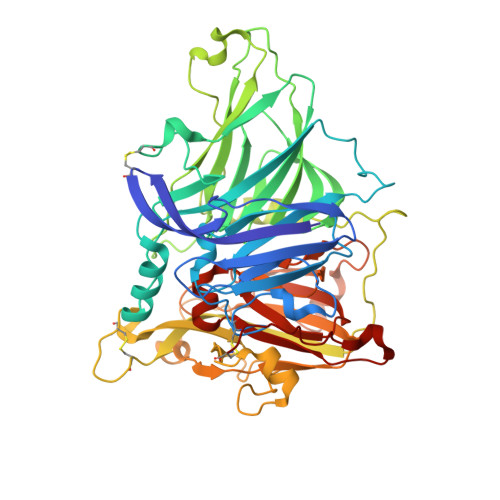Structural basis for monolignol oxidation by a maize laccase.
Xie, T., Liu, Z., Wang, G.(2020) Nat Plants 6: 231-237
- PubMed: 32123349
- DOI: https://doi.org/10.1038/s41477-020-0595-5
- Primary Citation of Related Structures:
6KLG, 6KLI, 6KLJ - PubMed Abstract:
Plant laccases catalyse the oxidation of monolignols in lignification, a process reinforcing the cell wall of many different cell types that provide mechanical support, nutrient transportation and defence against pathogens in plants 1 . The isozymes display a broad range of substrate preferences. Here, the substrate preference of a laccase (ZmLac3) from Zea mays (maize) was characterized. The crystal structure of ZmLac3 revealed a compact and deep substrate-binding pocket, and the binding modes of sinapyl alcohol (SinA) and coniferyl alcohol (ConA) were solved. On the basis of structural data and kinetics analysis, we propose that the regionalization of polar and hydrophobic surfaces in the binding pocket of ZmLac3 is vital for defining the orientation of SinA/ConA binding. The extra methoxyl group in SinA makes substantial contributions to interactions between SinA and ZmLac3, which are absent in the ZmLac3-ConA complex. In summary, the polar and hydrophobic interactions between SinA/ConA and ZmLac3 determine the binding positions of the monolignols in ZmLac3. These results provide valuable insight about ZmLac3 catalysis and should aid industrial processes that use plant laccases.
Organizational Affiliation:
Key Laboratory of Environmental and Applied Microbiology, Chengdu Institute of Biology, Chinese Academy of Sciences, Chengdu, China.




















